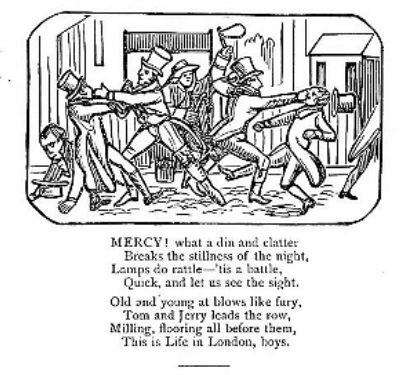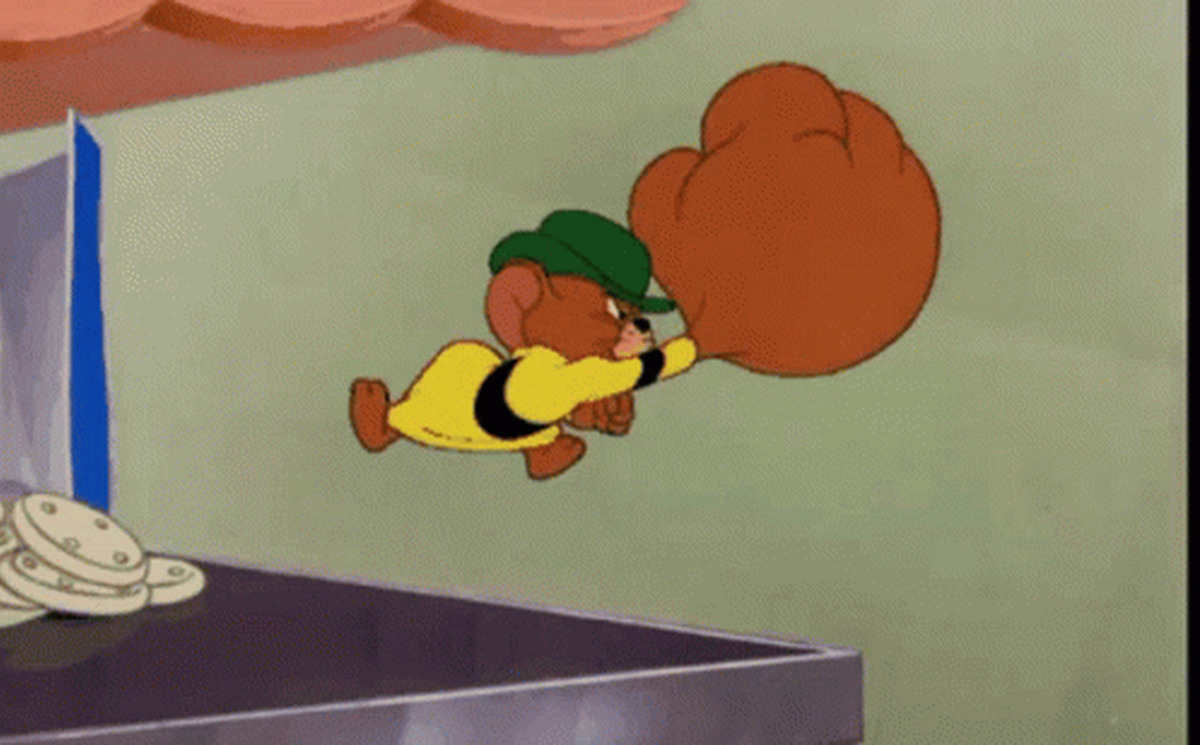
Tom and Jerry's long history of violence
Animation
20 January 2020
What passed for entertainment in early 19th century England wasn’t all Shakespeare plays and sentimental Jane Austin novels. Everyday recreational violence included bull-baiting, cockfighting, dog fights, cudgeling and wrestling.
though, the fistic art, particularly appealed to all classes of Regency England from peers of the realm to pickers of pockets. Pierce Egan, a sports writer of the day, brought a whole new jargon of pugilism to his reporting of these hugely popular boxing matches.
Flash cant
A boxing match was known as a mill and the coves that participated, betted and spectated at a milling were collectively known as The Fancy and the swells, toffs, trulls, lushes and toddlers who attended used their own lexicon to signal their kinship to The Fancy and baffle the uninitiated.
A boxer’s head was known as the nob, the attic, the knowledge box, the toploft or the brain canister. Blows were delivered by the mitt or box of fives to the peepers, the ivories or right in the tripe-shop.
A burster was knock-out punch that may have lead to seeing shooting stars, to bung up an eye was to give a black eye (‘a peeper in mourning’), noses got smellers, snorters and snufflers and one’s earhole could cop a lugger.
Boxers would tap their opponent’s ‘claret’.
Enter Tom and Jerry, swinging
On 15 July 1821, Egan published Life in London, ‘a faithful portrait of high and low life in east and west London'. Egan’s stories were about two men and their friends as they went on rambles and sprees and Egan incorporated the slang of the day, much it coming from the boxing world. The principal characters in Egan’s urban adventures were Jerry Hawthorn and his elegant friend Corinthian Tom – Tom and Jerry.
In 1821 W.T. Moncrieff, a successful dramatist and theater manager of the day wrote a play “Tom and Jerry, or, Life in London” based on Egan’s Life of London characters. The play with its lively pugilistic slang was so successful it was taken to the US where it launched a Tom and Jerry craze.
Cheap, rough taverns were ‘Tom and Jerry shops’, ‘Tom and Jerry gangs’ went on ‘Tom-and-Jerry frolics’, which usually featured young men in the picking of drunken fights and the destruction of property. Tom and Jerry became proverbial for young men causing disorder.
Despite this, the British Library website claims ‘there is no solid evidence to suggest that they influenced the creation of the cartoon cat and mouse duo of same name.’
Fight me.

The Stories of Slang: Language at Its Most Human by Jonathon Green http://jonathongreen.co.uk/
The true history of Tom and Jerry : or, The day and night scenes, of life in London from the start to the finish!
Hindley, Charles, d. 1893; Egan, Pierce, 1772-1849. Life in London; Egan, Pierce, 1772-1849. Finish to the adventures of Tom, Jerry, and Logic; Moncrieff, W. T. (William Thomas), 1794-1857. Tom and Jerry
Pierce Egan's Life in London
https://www.bl.uk/collection-items/pierce-egans-life-in-london